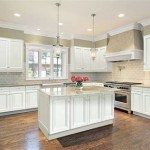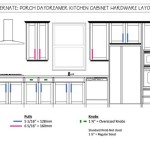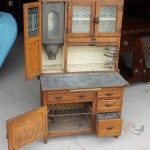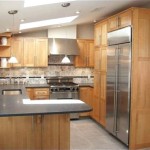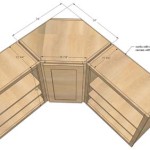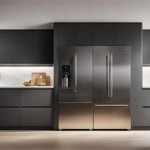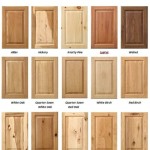Builders Warehouse Kitchen Cupboards Catalogue 2018: An Overview
The Builders Warehouse Kitchen Cupboards Catalogue 2018 provided a comprehensive overview of available options for renovating or installing a new kitchen. It served as a primary resource for homeowners and contractors alike, offering a range of styles, materials, and layouts designed to cater to diverse needs and budgetary constraints. The catalogue was not just a collection of products; it was a guide to understanding the nuances of kitchen design and functionality, enabling informed decisions about this crucial area of the home.
This article aims to dissect the Builders Warehouse Kitchen Cupboards Catalogue 2018, highlighting key features, prevalent trends, and the overall value proposition it presented to consumers. It will explore the various product categories, delve into material specifications, and discuss the design principles that underpinned the featured kitchen layouts. The focus will be on providing an objective analysis of the catalogue's contents and its relevance to the kitchen renovation market at the time.
Range of Styles and Finishes
The 2018 catalogue showcased a broad spectrum of kitchen cupboard styles, reflecting the evolving tastes and preferences of the South African consumer base. From classic and traditional designs to sleek and modern aesthetics, the catalogue aimed to provide options that would seamlessly integrate into existing home decor or serve as the foundation for a completely new interior design concept.
Traditional styles were characterized by ornate detailing, raised panel doors, and often incorporated natural wood finishes like oak or cherry. These kitchens typically evoked a sense of warmth and timeless elegance. In contrast, modern styles featured clean lines, minimalist hardware, and a focus on functionality. Popular finishes included high-gloss laminates, stainless steel accents, and handle-less designs that contributed to a streamlined appearance.
Between these two extremes, the catalogue also presented transitional styles, which blended elements of both traditional and modern design. These kitchens often featured shaker-style doors, a simple yet versatile design, paired with contemporary hardware and color palettes. This approach allowed for customization and the creation of a kitchen that felt both familiar and fresh.
The finishes available were equally diverse, ranging from solid wood veneers to durable melamine and wrap options. Solid wood offered the highest level of quality and durability, but also came with a higher price tag. Melamine and wrap options provided more affordable alternatives, offering a wide range of colors and textures while still maintaining a reasonable level of durability and resistance to wear and tear.
Color palettes featured prominently in the catalogue, highlighting the latest trends in kitchen design. Neutral tones such as white, grey, and beige were widely represented, offering a versatile backdrop for adding pops of color through accessories and appliances. Bold colors like navy blue, emerald green, and even black were also gaining popularity, adding a touch of drama and personality to the kitchen space. The catalogue often showcased examples of how different color combinations could be used to create various moods and atmospheres within the kitchen.
Hardware choices, including handles, knobs, and hinges, played a crucial role in defining the overall style of the kitchen. The catalogue presented a variety of hardware options, from classic brass knobs to sleek stainless steel handles, allowing customers to personalize their kitchens and add their own individual touch.
Materials and Construction
A critical aspect of the Builders Warehouse Kitchen Cupboards Catalogue 2018 was the detailed information provided on the materials used in the construction of the cupboards. This transparency allowed consumers to assess the quality and durability of the products and make informed decisions based on their specific needs and budget.
The catalogue clearly outlined the different materials used for the cabinet boxes, door fronts, and hardware. Common materials for cabinet boxes included particleboard, MDF (Medium-Density Fiberboard), and plywood. Particleboard was often used for its affordability, while MDF offered a smoother surface for painting or laminating. Plywood was generally considered a higher-quality option due to its strength and resistance to moisture damage.
Door fronts were available in a wider range of materials, including solid wood, wood veneer, melamine, thermofoil (wrap), and painted finishes. Solid wood offered the most natural and luxurious look, but required proper maintenance to prevent warping or cracking. Wood veneer provided a similar aesthetic at a lower price point, while melamine and thermofoil offered durability and affordability. Painted finishes allowed for a wide range of color options and could be easily updated to reflect changing trends.
The construction methods employed also played a significant role in the overall quality and durability of the cupboards. The catalogue often highlighted features such as dovetail joinery, solid wood drawer boxes, and soft-close hinges and drawer slides. These features indicated a higher level of craftsmanship and attention to detail, suggesting that the cupboards were built to last.
The catalogue also addressed the importance of proper installation. It often included guidelines and recommendations for installing the cupboards correctly, emphasizing the need for level surfaces, secure fastenings, and proper sealing to prevent moisture damage. Builders Warehouse typically offered installation services as well, providing customers with a convenient and reliable option for ensuring that their kitchens were installed professionally.
Furthermore, the catalogue often included information on the environmental impact of the materials used in the construction of the cupboards. It might highlight the use of sustainably sourced wood, low-VOC (Volatile Organic Compounds) finishes, and other eco-friendly practices. This demonstrated a commitment to sustainability and appealed to environmentally conscious consumers.
Layout Options and Functionality
Beyond styles and materials, the Builders Warehouse Kitchen Cupboards Catalogue 2018 showcased a variety of kitchen layouts designed to maximize space and functionality. The catalogue provided visual examples of different layouts, such as galley kitchens, L-shaped kitchens, U-shaped kitchens, and island kitchens, catering to various room sizes and configurations.
Galley kitchens, typically found in smaller spaces, featured two parallel runs of cabinets and countertops. The catalogue demonstrated how to optimize storage in this layout using vertical shelving, pull-out drawers, and efficient placement of appliances. L-shaped kitchens, ideal for medium-sized spaces, utilized two adjacent walls to create a functional work triangle. The catalogue showcased how to incorporate islands or peninsulas into L-shaped kitchens to add extra counter space and seating.
U-shaped kitchens, suitable for larger spaces, wrapped around three walls, providing ample counter space and storage. The catalogue emphasized the importance of ergonomics in U-shaped kitchens, ensuring that the sink, stove, and refrigerator were positioned within easy reach of each other. Island kitchens, often the centerpiece of larger homes, featured a freestanding island that provided additional workspace, storage, and seating. The catalogue demonstrated how to incorporate different features into islands, such as sinks, cooktops, and wine coolers, to create a truly customized kitchen.
The catalogue also highlighted various functional features, such as pull-out pantries, corner cabinets with lazy Susans, and spice racks, designed to maximize storage and organization. These features helped to keep the kitchen clutter-free and efficient.
Accessibility was another key consideration. The catalogue often showcased designs that incorporated universal design principles, such as wider doorways, adjustable countertops, and lever-style handles, making the kitchen accessible to people of all ages and abilities. This reflected a growing awareness of the importance of creating inclusive and user-friendly spaces.
The 2018 catalogue served as a valuable resource for homeowners looking to renovate or build a new kitchen. It provided a comprehensive overview of available styles, materials, and layouts, empowering consumers to make informed decisions and create kitchens that were both beautiful and functional.

The Home Kitchen Showroom Diy Blog

2024 Kitchen Trends Superior Cabinets

Home Dzine Kitchen Build A Diy And Save Thousands

2024 Kitchen Trends Superior Cabinets

Buy Home And Kitchen Standard Built In Cupboard White 1820 X 500 2100mm Builders

How To Choose The Right Materials For Your Kitchen Diy Blog

Home Dzine Kitchen Build A Diy And Save Thousands

Builders Warehouse Kitchen Designs

How To Build Your Own Kitchen From Pre Assembled Units Diy Blog

Explaining Our Beautiful Kitchen Cabinet Materials Montgomery Homes
Related Posts

